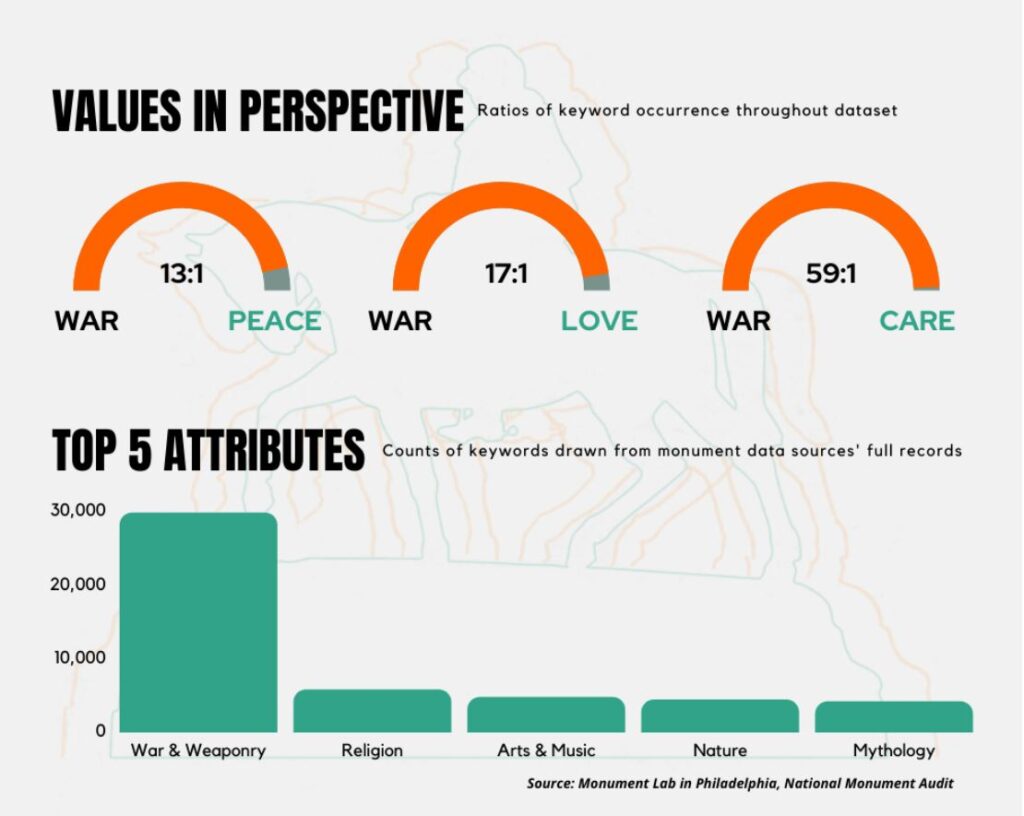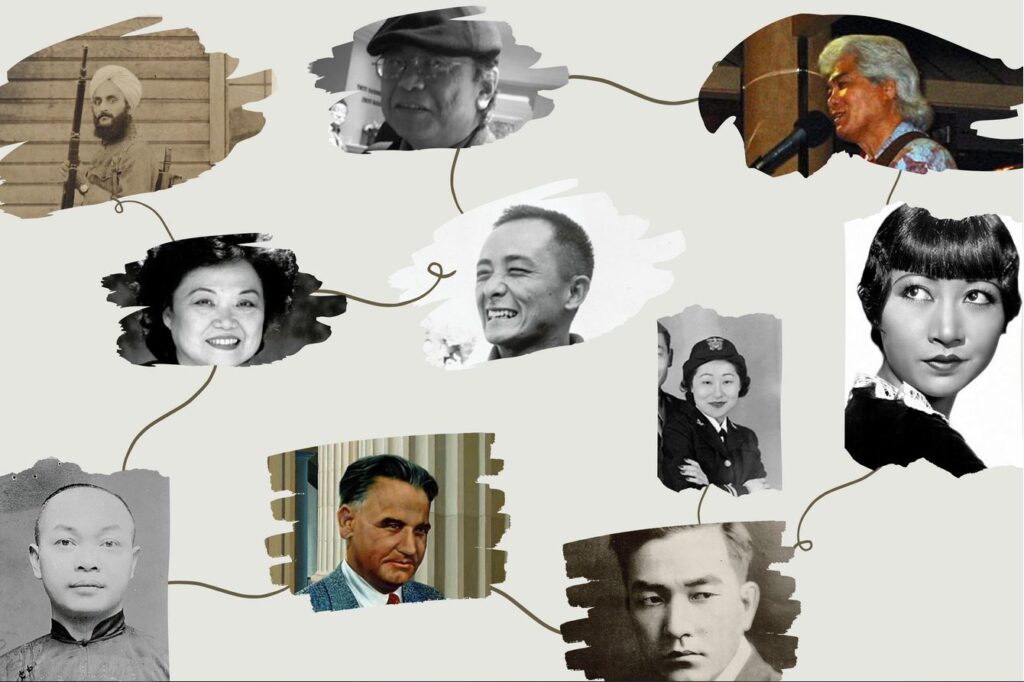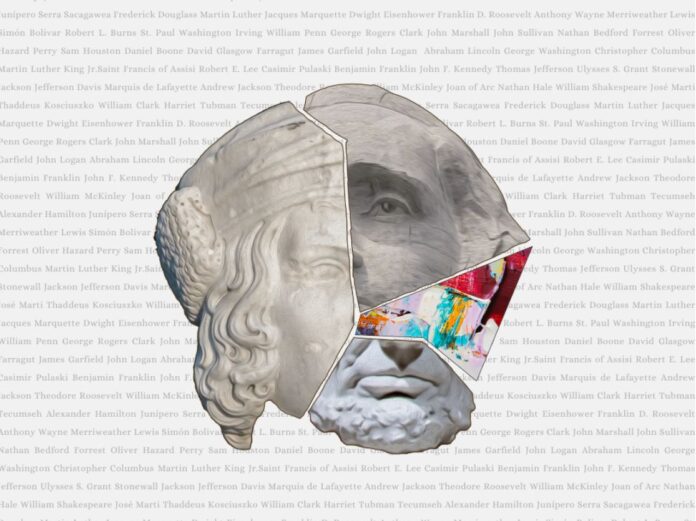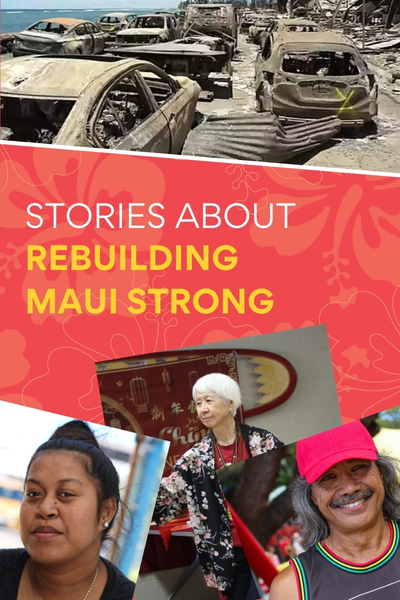By Raymond Douglas Chong, AsAmNews Staff Writer, with Lucca Wang & Rhiannon Koh
Frederick Douglass, famous Black abolitionist, said, “Perhaps no one monument could be made to tell the whole truth of any subject which it might be designed to illustrate.”
This year, in partnership with Andrew W. Mellon Foundation, the Monument Lab in Philadelphia conducted a national audit of monuments across the U.S. called the National Monument Audit. This research takes stock of statues, monoliths, and markers in our nation’s commemorative public spaces: There are no monuments of people in the Latinx, Asian American and Pacific Islander, and lesbian, gay, bisexual, transgender and queer (LGBTQ) -plus communities, and this needs to change.

Research and Findings
Monument Lab defines a monument as “a statement of power and presence in public.” The Monument Lab’s research underlines four key points about monuments in our society: they have always changed through time; the monument landscape is overwhelmingly white and male; the most common features of American monuments reflect war and conquest; and the story of the U.S. as told by our current monuments are perceived to represent our history.
The Monument Lab states that our nation’s broader monument landscape continues to evolve as artists, educators, and activists critically engage our inherited symbols in order to unearth the next generation of monuments.
Researchers propose that we move forward by embracing the idea that monuments must change and thus encourage our monument makers and stewards to work with communities to contend with the sites and symbols they have inherited in meaningful and intentional ways.
Through new forms of monumental affirmation, creativity, and resistance, we can repair and reimagine how history lives with us every day.
The National Monument Audit report will guide the Andrew W. Mellon Foundation’s landmark Monuments Project, a $250 million investment to “transform the way our country’s histories are told in public spaces and ensure that future generations inherit a commemorative landscape that venerates and reflects the vast, rich complexity of the American story.”
Overwhelmingly White and Male
The National Monument Audit cites the 50 individuals with the most national monuments made of them in our country. They are listed below with the number of monuments made of them following their name in parentheses:
1. Abraham Lincoln (193)
2. George Washington (171)
3. Christopher Columbus (149)
4. Martin Luther King Jr. (86)
5. Saint Francis of Assisi (73)
6. Robert E. Lee (59)
7. Casimir Pulaski (51)
8. Benjamin Franklin (48)
9. John F. Kennedy (44)
10. Thomas Jefferson (36)
11. Ulysses S. Grant (35)
12. Stonewall Jackson (33)
13. Jefferson Davis (30)
14. Marquis de Lafayette (30)
15. Andrew Jackson (27)
16. Theodore Roosevelt (27)
17. William McKinley (27)
18. Joan of Arc (26)
19. Nathan Hale (24)
20. William Shakespeare (24)
21. José Marti (23)
22. Thaddeus Kosciuszko (22)
23. William Clark (22)
24. Harriet Tubman (21)
25. Tecumseh (21)
26. Alexander Hamilton (20)
27. Junípero Serra (20)
28. Sacagawea (20)
29. Frederick Douglass (19)
30. Martin Luther (19)
31. Jacques Marquette (18)
32. Dwight Eisenhower (17)
33. Franklin D. Roosevelt (17)
34. Anthony Wayne (16)
35. Merriweather Lewis (16)
36. Simón Bolivar (16)
37. Robert L. Burns (15)
38. St. Paul (15)
39. Washington Irving (14)
40. William Penn (14)
41. George Rogers Clark (13)
42. John Marshall (13)
43. John Sullivan (13)
44. Nathan Bedford Forrest (13)
45. Oliver Hazard Perry (13)
46. Sam Houston (13)
47. Daniel Boone (12)
48. David Glasgow Farragut (12)
49. James Garfield (12)
50. John Logan (12)
AAPI Communities are Ignored
88% of this list are 44 people who are white, male, and wealthy. They include U.S. presidents, U.S. generals, and slave owners. 10%, or 5 people, are Black or Indigenous. The list includes zero Latinx, Asian American and Pacific Islander (AAPI), or LGBTQ-plus people.
The white power structure of governments, institutions and organizations has ignored American history involving AAPI communities. Our prominent figures are ghosts to them. In a nation of 329 million, AAPI people count as 24 million, or 7.3%, of the population. The lack of recognition of our contributions memorialized in monument form for all Americans to celebrate is a disappointing disparity.
Recognizing AAPI in Our Society
Many AAPIs have enriched the multihued fabric of America. Our trailblazers have contributed to the soul of America by arts and culture; civil rights, public service, and politics; entrepreneurship and business leadership; infrastructure; military and national security; public health; and science and technology.
America dishonors and disrespects all AAPI with callowness as marginal Americans. This barren panorama of national monuments to boost the power and presence of our prominent figures across America is an inequitable disgrace. Our American society leaders, decision makers and legislators, must change this situation about national monuments in our public spaces. They should accurately reflect the significant contributions of AAPI in our America.”

Here are 15 AAPI heroes who deserve to be celebrated in monument form:
- Bhicaji Framji Balsara was a Parsi Indian American cotton buyer, who was the first Indian to become a naturalized American citizen in 1909.
- Carlos Sampayan Bulosan was a Filipino American novelist and poet best known for his novel, America is in the Heart.
- Susan Ahn Cuddy was a Korean American Navy officer and intelligence agent, who was the first female gunnery officer in the U.S. Navy, during World War II.
- Don Ho was a Hawaiian American musician, singer and entertainer whose most popular song was “Tiny Bubbles.”
- Larry Itliong was a Filipino American labor organizer, a key leader for farmworkers to gain better wages and benefits during the Delano Grape Strike and Boycott (1965-1970).
- Corky Lee was a Chinese American photographer, who shed light on the struggles and diverse and accurate realities of the Asian American people and communities, in his pursuit of photographic justice.
- Sammy Lee was a Korean American diver and doctor, who was the first Asian American man to win an Olympic gold medal in 1948.
- Mako (Makoto Iwamatsu) was a Japanese American actor, who was nominated for the Academy Award for Best Supporting Actor in The Sand Pebbles in 1966.
- Patsy Mink was a Japanese American attorney and a U.S. House Representative. She was the first Asian American woman elected to U.S. Congress in 1964.
- Haing Somnang Ngor was a Cambodian American gynecologist, obstetrician, actor and author, who won the Academy Award for Best Supporting Actor in the film The Killing Fields in 1985.
- Van Pao was a Hmong American Royal Lao Army general and advocate for the Hmong community.
- Dalip Singh Saund was a Sikh Indian American entrepreneur and U.S. House Representative. He was the first Asian American man elected to the U.S. Congress in 1956.
- Bhagat Singh Thind was a Sikh Indian American soldier, writer and lecturer, who sought citizenship for Indian Americans. His own American citizenship was revoked twice, in 1918 and in 1923. Thind finally got his American citizenship as World War I veteran in 1935.
- Kim Ark Wong was a Chinese American activist, who affirmed birthright citizenship under Fourteenth Amendment, in 1898 landmark decision by U.S. Supreme Court.
- Ann May Wong was a Chinese American actor, and she was the first Chinese American movie star in Hollywood.
We, as AAPI, have richly contributed to the vibrancy and diversity for a united and prosperous America. We all must now recognize this, including in our national monuments.
Our American society leaders, decision makers and legislators must change this situation about national monuments in our public spaces. They should accurately reflect the significant contributions of AAPI in our America.
Sources of images in this article:
- Christopher Columbus
- George Washington
- Abraham Lincoln
- Kim Ark Wong
- Corky Lee
- Anna May Wong
- Don Ho
- Patsy Mink
- Sessue Hayakawa
- Sammy Lee
- Dalip Singh Saund
- Bhagat Singh Thind
- Susan Ahn Cuddy
AsAmNews has Asian America in its heart. We’re an all-volunteer effort of dedicated staff and interns. Check out our new Instagram account. Go to our Twitter feed and Facebook page for more content. Please consider interning, joining our staff, or submitting a story or making a contribution.


